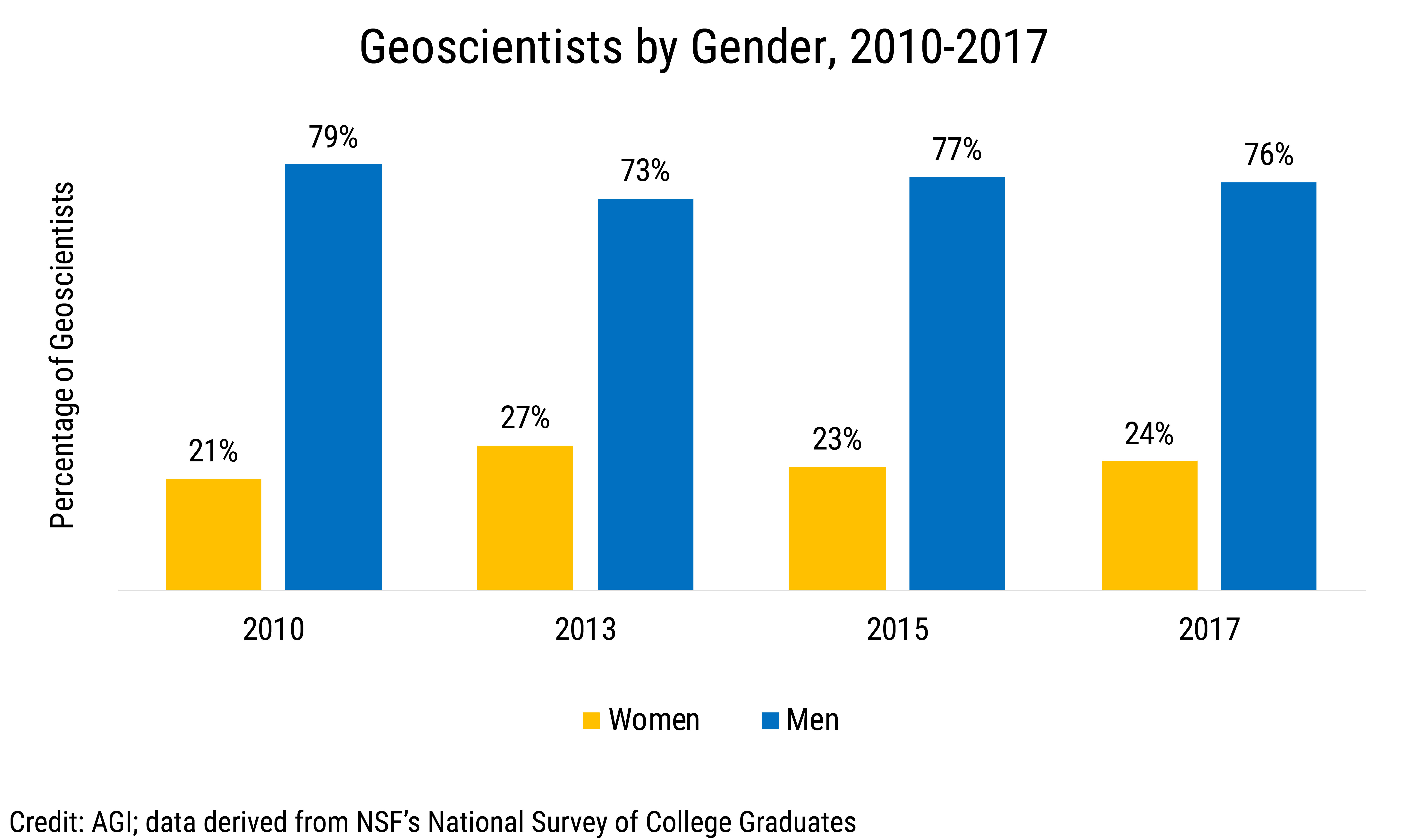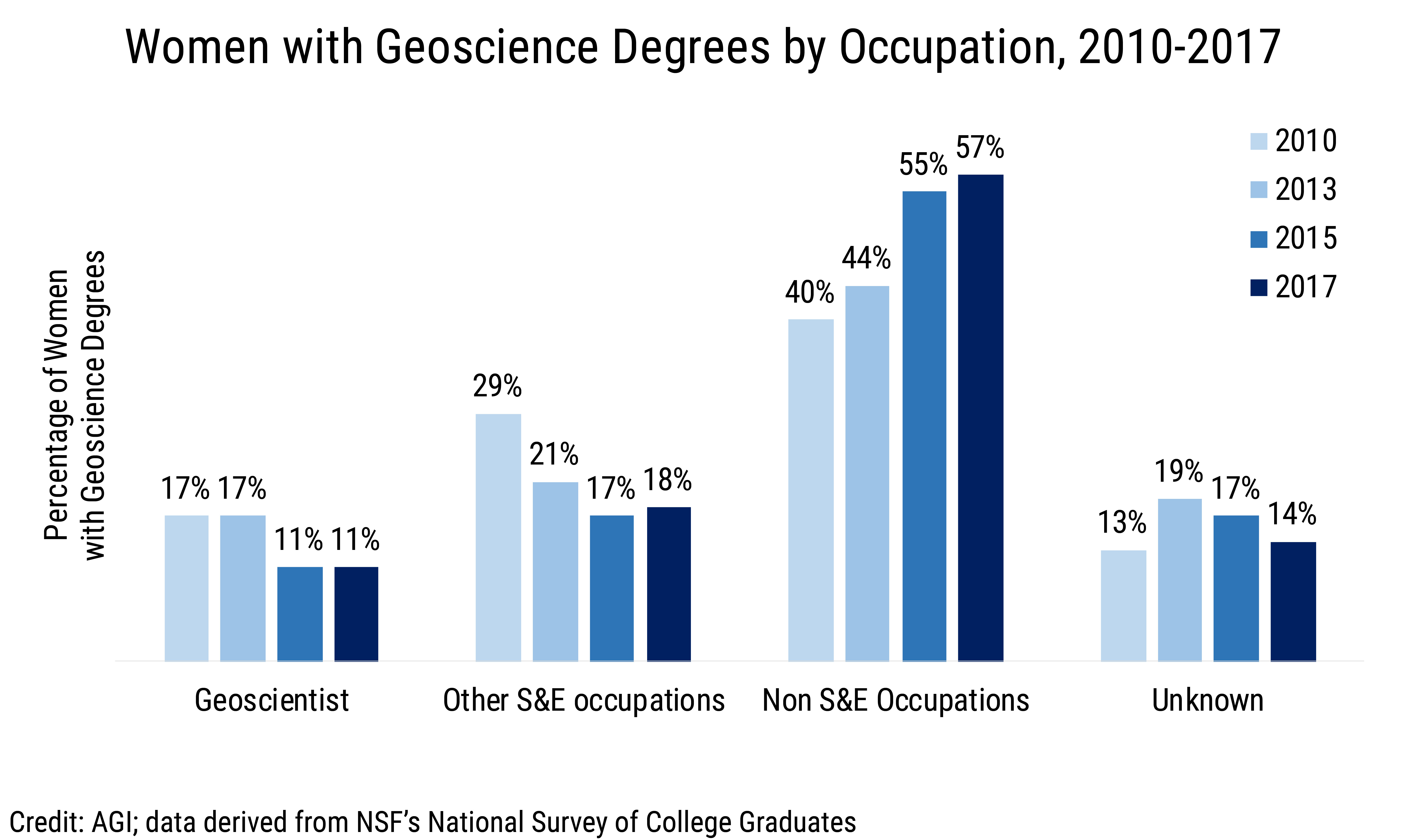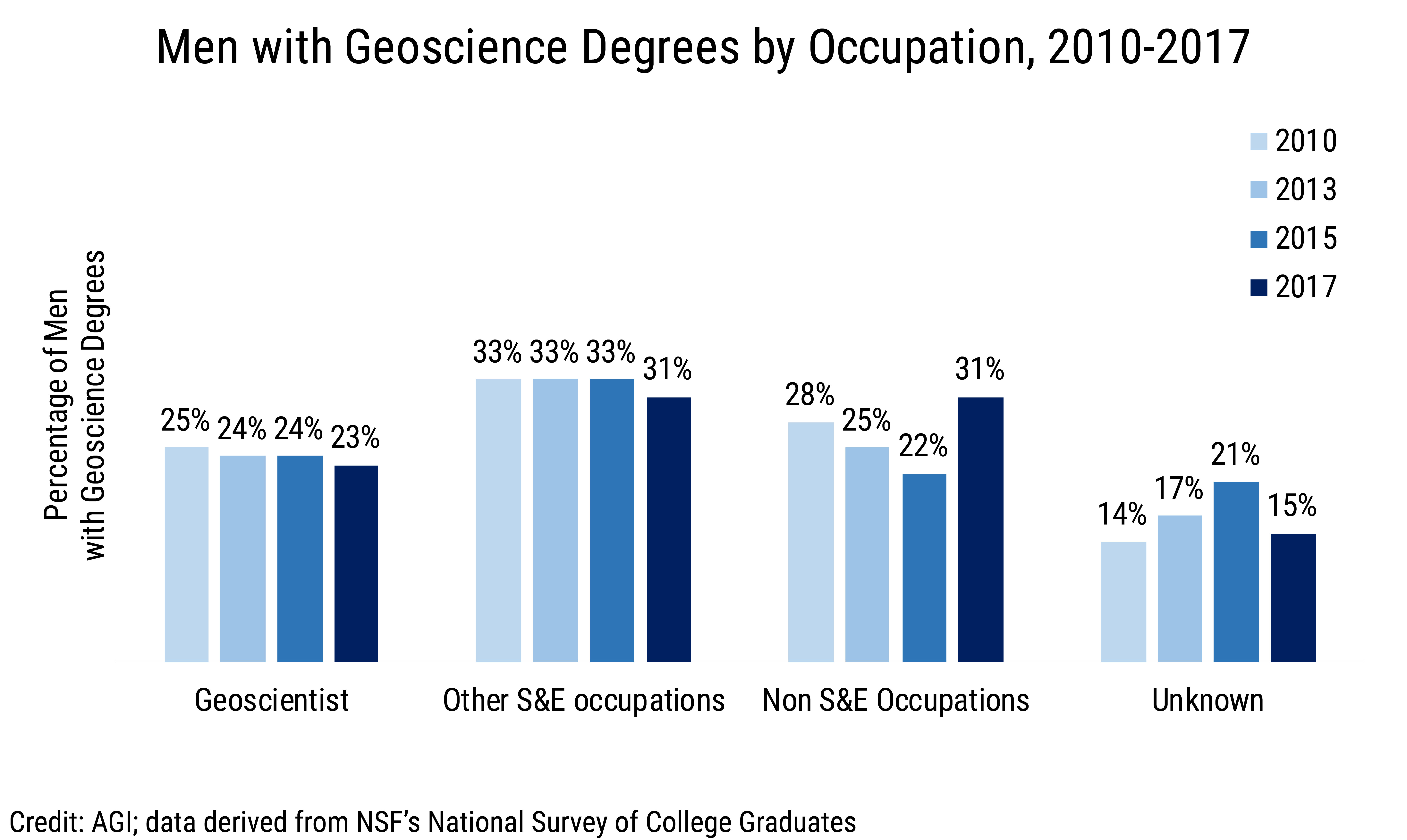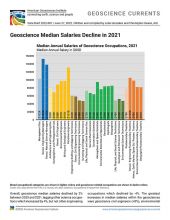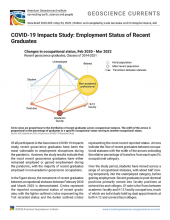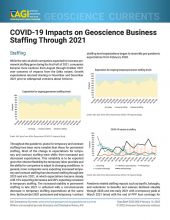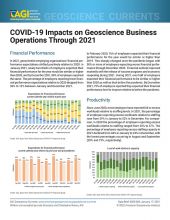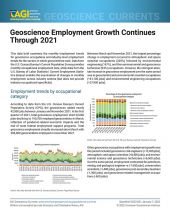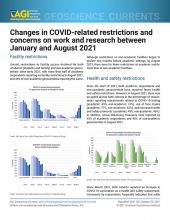This data brief encourages thought and conversation around the retention of women within the geoscience profession. Investments in the recruitment of women into the geosciences started in the 1980’s. In 1985, 26% of geoscience undergraduate degrees and 24% of geoscience graduate degrees were conferred to women. In 2017, those percentages increased to 43% for geoscience undergraduate degrees and 39% for geoscience graduate degrees.
Geoscience Workforce Participation
Participation of women in geoscience occupations, specifically in environmental science and geoscience occupations as defined by the U.S. Bureau of Labor Statistics Current Population Survey (CPS), increased from 22.5% in 2005 to 33.1% in 2018. Whereas the CPS data lumps geoscientists and environmental scientists into a single occupational category, the National Science Foundation’s National Survey of College Graduates (NSCG) data facilitates the identification of geoscientists separately from environmental scientists. Both surveys (CPS and NSCG) also use different methodologies for calculating the population size of those working within these occupational fields.
Examination of the NSCG data reveals that since 2010, the percentage of women working as geoscientists has remained relatively steady near 25%. Although most geoscientists have terminal geoscience degrees, about one quarter do not, and this percentage varies by gender. The percentage of women working in the geosciences who have terminal geoscience degrees remained near 70% from 2010 through 2015 and declined to 58% in 2017. This decline was due in part to the influx of women with terminal degrees in biological sciences, physics and astronomy, and engineering.
Occupations of Women with Geoscience Degrees
Less than one-fifth of women with terminal geoscience degrees work in the geosciences. Since 2010, the percentage of women with geoscience degrees working as geoscientists declined from 17% to 11% in 2017. In addition, the percentage of women with terminal geoscience degrees working in other science and engineering occupations declined from 29% in 2010 to 18% in 2017. Fluctuations in the percentage of women with terminal geoscience degrees working in other science and engineering occupations appear to be partly driven by those whose occupational status was unknown, indicating that these women were either not employed or not seeking employment.
Between 2010 and 2017, the percentage of women with terminal geoscience degrees working in non-science and engineering occupations increased from 40% to 57%. In 2017, 14% of women with geoscience degrees were working as non-science and engineering managers, 9% in sales and marketing occupations, and 21% in other non-science and engineering occupations.
The percentage of women with geoscience degrees working in the same occupational field is on par with other physical sciences. In chemistry, 14% of women with terminal chemistry degrees worked as chemists in 2017 and 13% of women with terminal physics degrees worked as physicists. However, the percentage of women working in non-science and engineering occupations is much lower in other physical sciences than in the geosciences (21% for chemistry and 11% for physics). This suggests retention issues within the academic-to-workforce pathway are not unique to the geosciences. This may also signal the versatility of a geoscience degree in terms of skillset transference to non-science and engineering occupations.
Over the same time period, the percentage of men whose highest degree is in the geosciences has remained relatively steady between geoscience and other science and engineering occupations. Fluctuations in percentage of men with geoscience degrees working in non-science and engineering occupations appears to be due to the percentage whose occupational status was unknown, indicating that these men were either not employed or not seeking employment.



